Stargate SG-1 Season 6
Executive producers: Brad Wright, Robert C. Cooper, Michael Greenburg, Richard Dean Anderson
Original air dates: June 7, 2002 – March 23, 2003
Mission briefing. Even as SG-1 mourns the loss of Jackson, there’s a fresh attack from Anubis, as he uses a weapon to overload Earth’s Stargate so it will explode, taking the planet with it. SG-1 manages to save the Earth with a combination of Carter’s brains, O’Neill’s piloting skills, and a clever suggestion by Quinn, who replaces Jackson on SG-1. However, the Stargate itself is lost, forcing the U.S. to purchase use of the other Stargate from the Russians.
Thor also manages to break free of Anubis’s clutches, using his downloaded consciousness to take over Anubis’s mothership, which then crashes on Earth. SG-1 is able to contact the Asgard, who get Thor a new cloned body.
The Asgard have bigger problems, though: the Replicators have taken over their homeworld of Hala and now have taken human form. SG-1 is able to stop them temporarily, but they’ll be back. In exchange, the Asgard help convince the superpowers of Earth to let the U.S. Air Force continue to administer the Stargate, when the U.S. and Russia reveal the Stargate program’s existence to Great Britain, France, and China.
Anubis isn’t the only Goa’uld causing problems. When O’Neill is blended with a Tok’ra to save his life, the symbiote Kanan finds itself compelled by O’Neill’s tendencies to go back for a woman he loved—a slave in Baal’s service. This leads to O’Neill being tortured by Baal. In addition, Nirrti’s continued experiments result in deadly changes to Quinn, which actually enable Quinn to help SG-1 defeat one of Baal’s underlings, Mot.
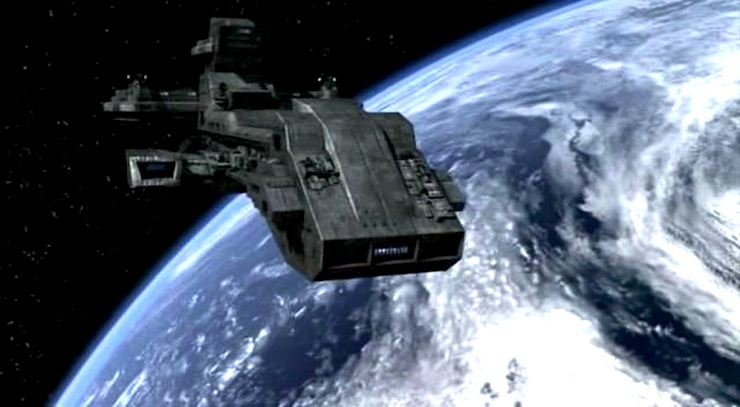
At home, the NID continues to be a problem. The rogue faction controlled by Simmons tries to steal Earth’s first starship, the Prometheus. They also clone the Goa’uld that Adrian Conrad was implanted with and use it to experiment on members of a small town, who are possessed by a collective Goa’uld consciousness when asleep. After that, Agent Barrett of the NID is assigned by the president to root out the rogue elements of the NID, with the help of—of all people—Senator Kinsey. This results in the NID framing O’Neill for an attempted assassination of Kinsey, but SG-1 manages to expose the conspiracy (which is done via alien technology from Area 51).
The three-way alliance among the Tau’ri, the Tok’ra, and the Jaffa rebellion almost is destroyed by a Goa’uld assassin, who fuels the ancient rivalry between the Jaffa (servants of the Goa’uld) and the Tok’ra (who fight the Goa’uld), even though they’re both on the same side now. Shortly afterward, the Tok’ra discover that the Pangarans have been using the dying body of Agyria, the queen from whom all Tok’ra descend, to create Tretonin, a healing drug. When a meeting of the Jaffa rebellion is ambushed, the Jaffa massacred, Teal’c manages to save himself and Bra’tac by sharing his symbiote larva with his mentor—but the symbiote dies, and the pair must now take Tretonin regularly to survive thenceforth. They begin their campaign to convince all Jaffa to use Tretonin to relieve them of their dependence on the Goa’uld to survive.
An Antarctic expedition reveals the frozen body of one of the Ancients who built the Stargate network—but the disease that killed them is also loosed, and almost kills O’Neill. Quinn’s people, the Kelownans, make an attempt at an alliance. The Earth is invaded by out-of-phase bugs. SG-1 encounters the Hebridans and Serrakins, and neither race is exactly what they expect. When the Prometheus has to crash on Tagrea, they set off some security issues with the planet, especially when they dig up a Stargate. And Maybourne tricks SG-1 into taking him offworld to a place he thinks is paradise, but turns out to be not so much.

Anubis exposes Khonshu as a Tok’ra, and Khonshu’s First Prime Her’ak pledges his allegiance to Anubis. Then Anubis targets all the other System Lords, and SG-1 can only stop him with the help of the ascended Jackson—who’s already helped O’Neill and Teal’c from his ascended position before—and it involves a trip back to where it all began: on Abydos.
Best episode: “Abyss.” One of three occasions when Michael Shanks returns to play Jackson, but that’s not why this episode gets the top spot. It’s a tour-de-force for Richard Dean Anderson, a magnificent showcase for Cliff Simon, who takes the quickie walk-on role of Baal from “Summit”/“Last Stand” and makes him a bad guy to be reckoned with, a serious revival of the O’Neill-Jackson dynamic, with everything that these two characters are being showcased, plus there’s a good examination of what Tok’ra blending really means. The whole thing happens, not because of something Kanan did to O’Neill, but because of the influence of O’Neill on Kanan…
Highly honorable mention to “Allegiance,” which only didn’t get the top spot due to some bits of the plot that just don’t make any sense, but it works because it plays with the dynamics of the humans, Tok’ra, and Jaffa in interesting ways, and makes good use of the “locked planet” structure.
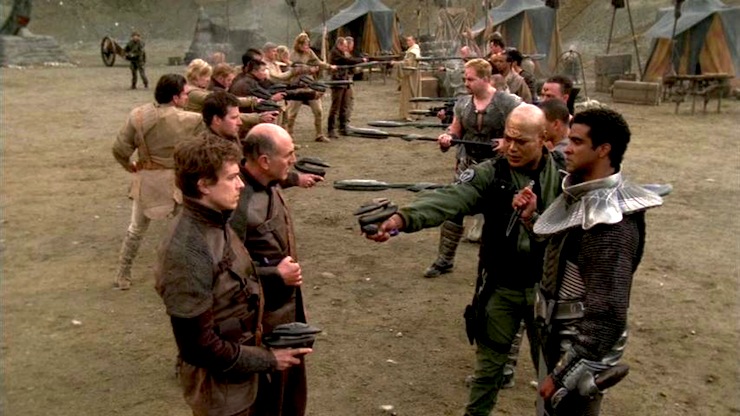
Also strong: the nifty take-over-the-ship adventure of “Prometheus,” the hilarious in-joke-laden goofiness of “The Other Guys,” and the alternate take on the characters in “The Changeling.”
Worst episode: “Paradise Lost,” in which the character of Samantha Carter is reduced to a blubbering wreck who is chewed out by Dr. frikkin Lee of all people, and instead of acting like a major in the Air Force, she instead turns into a puddle of goo crying on Teal’c’s shoulder. It’s embarrassing and stupid and pathetic, and ruins what should be a fun romp with Anderson and Tom McBeath as Maybourne being stuck on a planet together. But the show has done so well by Carter up to this point that this episode just leaves a horrendous taste in the mouth.
Runners up include “Nightwalkers” (which isn’t nearly as much of a horror movie as it wants to be), “Sight Unseen” (because the producers apparently forgot how awful “Bane” was), “Forsaken” (the only thing more boring would be to watch the paint used for this paint-by-numbers plot dry), and “Memento” (if they want to riff on Star Trek, fine, by why do a boring Trek riff?).
Can’t we just reverse the polarity? The SGC’s constant mucking about with alien technology has resulted in the Prometheus, and actual honest-to-gosh spaceship, which we first see in, appropriately, “Prometheus.” It has some issues—the ship is stolen before it’s finished, and they have to eject the engine on a test flight in “Memento” because it doesn’t work right—but it’s Earth’s first foray into becoming an actual power in the galaxy as opposed to an irritant.
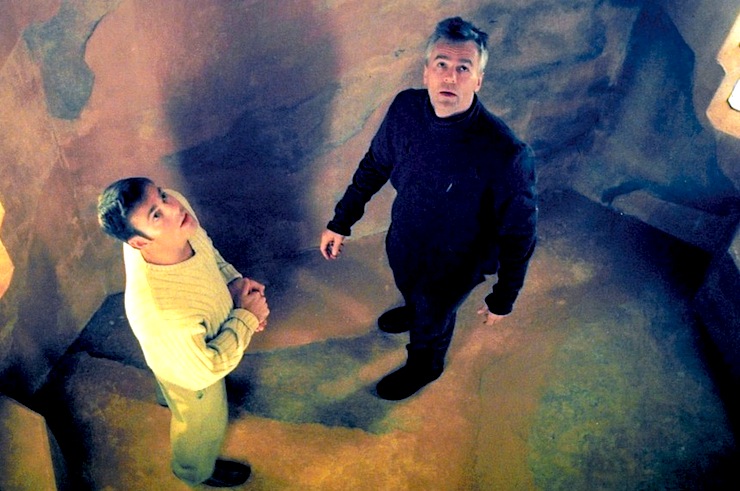
For cryin’ out loud! When he contracts a fatal illness in “Frozen,” O’Neill very very reluctantly agrees to be blended with a Tok’ra. But even as Kanan heals O’Neill, he also becomes influenced by O’Neill’s strong desire to never leave someone behind, and so he goes back to rescue a slave in Baal’s service, which leads to O’Neill being tortured by Baal by being killed and revived via sarcophagus over and over again in “Abyss.” O’Neill, who was never all that thrilled with the Tok’ra in the first place, becomes even more resentful of them, which leads to a really interesting conversation between him and Jacob in “Allegiance.”
It might work, sir. Carter—with an inspirational push from Quinn—saves the Earth again in “Redemption,” and also shows off her amazing improvisational science skills in “Prometheus” and “Forsaken.” Since many of her potential love interests were killed off last season, she gets a new one in the humanform Replicator Fifth in “Unnatural Selection,” whom she betrays on O’Neill’s order (and boy will they all come to regret that…).
Indeed. Teal’c loses his symbiote in “The Changeling,” as does Bra’tac. This changes his life rather significantly, as he must now rely on Tretonin to survive, and he no longer has “junior’s” healing ability to rely on.
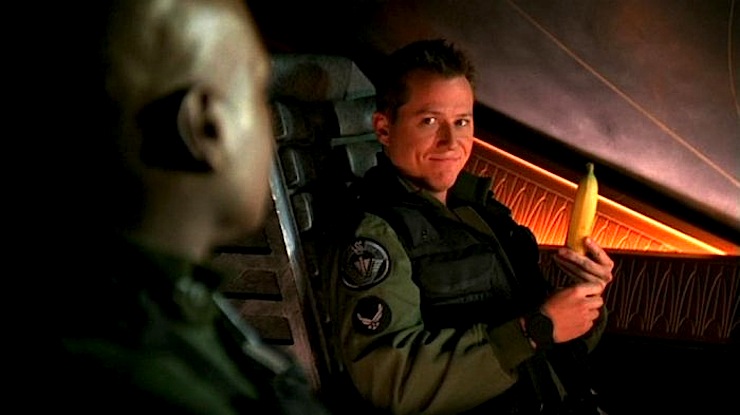
How do I know what color to wear? O’Neill is excessively reluctant to have Quinn replace Jackson, at least in part because Jackson died saving Quinn and his people. He only gives in because the Russians want the fourth SG-1 member to be one of theirs, and O’Neill would never go for that. Quinn’s photographic memory and compassion both prove useful throughout the season, as well as his ability to think quickly.
You have a go. Hammond does a good job representing the U.S. (aided by Davis) when the Stargate program is revealed to the other members of the UN security council, though in order to counteract Kinsey’s general dickishness, he has to call in Thor to intimidate the hell out of everyone.
I speak 23 different languages—pick one. Though he’s ascended, Jackson does show up three times to do the thing ascended folk aren’t actually supposed to do: interfere. He helps O’Neill get through being tortured in “Abyss” and helps Teal’c with his delusions while dying in “The Changeling,” in both cases helping them last long enough to be rescued by the rest of SG-1. Then, when Anubis threatens Abydos, Jackson takes a more active role.
Wayward home for out-of-work genre actors. Quantum Leap’s Dean Stockwell appears in “Shadow Play” as Quinn’s former mentor. John Billingsley took a break from playing Dr. Phlox on Star Trek: Enterprise to play Coombs in “The Other Guys,” while Peter Stebbings and Ingrid Kavelaars took a break from their recurring roles on Jeremiah to appear as, respectively, Malek in “Allegiance” and “Cure” and Major Gant in “Memento.” Gwynyth Walsh—who played the Klingon Lursa on a bunch of Star Trek episodes and in the movie Generations—also appears in “Cure,” while two other Trek regulars, John deLancie (“Prometheus”) and Ronny Cox (“Smoke and Mirrors,” “Disclosure”), make return engagements. Former star of The Questor Tapes (and regular guest on the Star Trek spinoffs and Babylon 5) Robert Foxworth also appears in “Memento.” George Wyner (of, among other things, Spaceballs fame) shows up in “Prometheus.” And Don Davis’s fellow Twin Peaks star Ian Buchanan appears in “Unnatural Selection.”
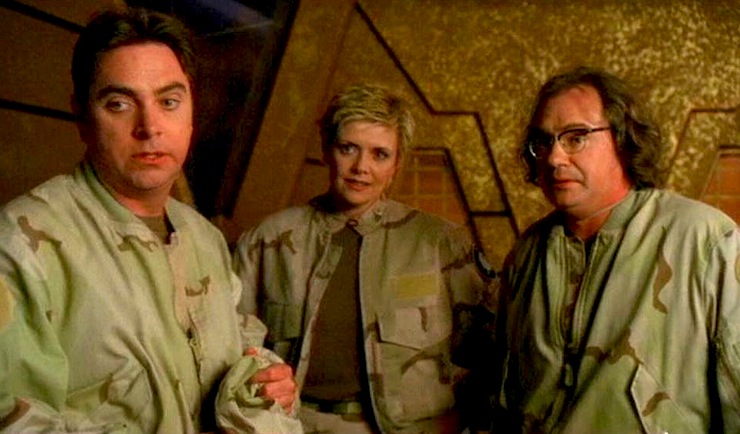
Trivial matters. This is the first season of the show to air first on what was then called the Sci-Fi Channel (now called SyFy). It was only intended to run for one season on Sci-Fi, as the channel’s primary interest was getting access to the show’s reruns, but it turned into such a huge hit for the network that they renewed it. Several episodes were written as if it were the last season, including final appearances for Nirrti, Simmons, and Adrian Conrad, as well as what was written as a final appearance for Maybourne, and the appropriately titled “Full Circle” brought the team back to Abydos. This would happen again in seasons seven and eight.
While SG-1 was never a huge hit for Showtime, it immediately became the highest rated dramatic series on Sci-Fi, leading to it lasting four years longer than expected on the channel and also resulting in two spinoffs.
It was never clear how, if the Goa’uld have genetic memory, the Tok’ra didn’t just know everything the Goa’uld did. “Cure” explains this by establishing that the Tok’ra descend from a different queen than the other Goa’uld.
We meet our first Ancient in “Frozen,” wherein we also learn that they were devastated by a plague, and “Full Circle” makes it clear that most of the Ancients ascended, and that Oma Desala is one of them. “Full Circle” also establishes that Anubis ascended, but then was cast out—but he’s still partly ascended, which is why he’s so powerful.
In addition to regulars Teryl Rothery, Carmen Argenziano, Tony Amendola, and Gary Jones, this season has return engagements from past guests deLancie, Cox, David Hewlett as McKay, Obi Ndefo as Rak’nor, Tom McBeath as Maybourne, Colin Cunningham as Davis, Peter Flemming as Barrett, Bill Dow as Lee, Musetta Vander as Shaun’ac, Neil Denis as Ry’ac, David Palffy as Anubis, Jacqueline Samuda as Nirrti (who also co-wrote the episode she appeared in), Bill Marchant as Conrad, Vince Crestejo as Yu, and, making his final appearance as Skaara, Alexis Cruz.
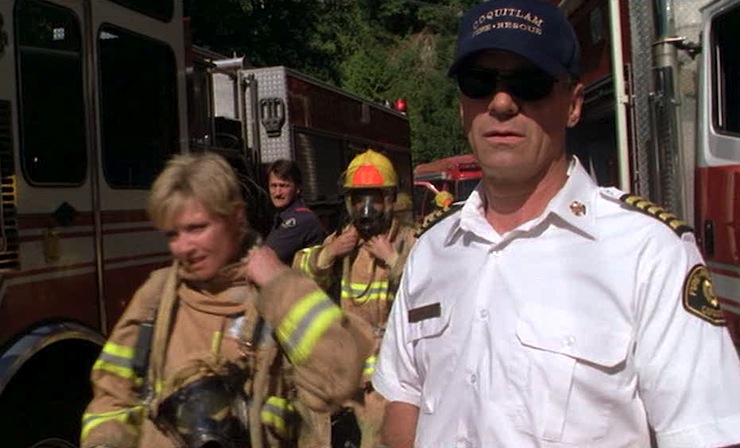
“The Changeling” was written by Christopher Judge, the actor’s second of four writing credits on the show.
The Prometheus is the first of many ships that Earth will have in its service. They’ll be seen regularly on all three shows moving forward, including one—the George Hammond—which will be commanded by Carter.
O’Neill is framed for shooting Kinsey via the technology used by the invading aliens in “Foothold.” The ashrak (established in “Line of Fire” as Goa’uld assassins) in “Allegiance” uses Nirrti’s invisibility technology, first seen in “Fair Game.”
One of your humble rewatcher’s favorite shows is a Canadian procedural called DaVinci’s Inquest. This season had several regulars from that show appearing: Ian Tracey in “Prometheus,” Gwynyth Walsh in “Cure,” Venus Terzo in “Frozen,” and Alex Diakun in “Memento,” plus Colin Cunningham recurred on both shows.
Richard Dean Anderson only agreed to return if his schedule was reduced, as the very physical role of O’Neill was starting to take a toll on his aging body, and so that had to be accommodated, including some episodes (“Nightwalkers,” “Disclosure”) in which he didn’t appear at all, and others in which his role was reduced, or set up in such a way that his filming schedule was brief (“Sight Unseen”).
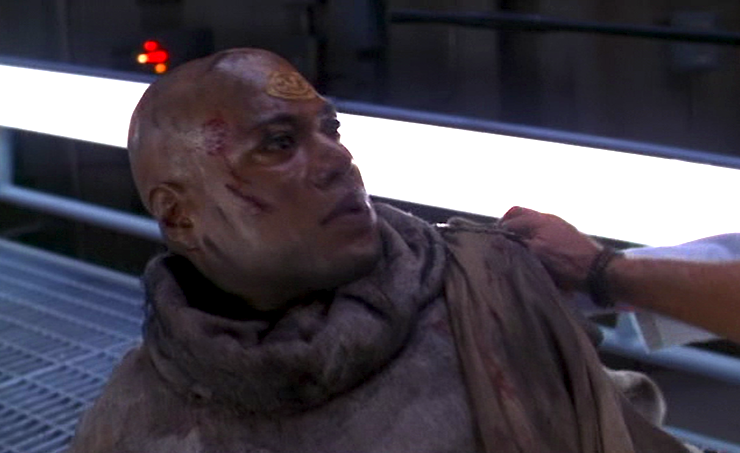
Chevron seven locked. I have an interesting relationship with the sixth season of the show, because it was actually my introduction to SG-1 as a series. I first started watching it on Sci-Fi—in fact, my first episode was “The Other Guys,” which I mostly watched because John Billingsley was in it.
I became hooked at that point. I watched the new episodes on Sci-Fi as well as the reruns the channel was showing (they did a block of four episodes every Monday night for several years).
But because of that, my first impression of the show is this season, which may be why I look on it more fondly than others, many of whom view it as inherently inferior due to the lack of Michael Shanks.
I don’t see the problem, myself. The show works just fine without Jackson because the show has grown to this point where it doesn’t rely on any particular set of characters. And Corin Nemec’s just fine, thanks.
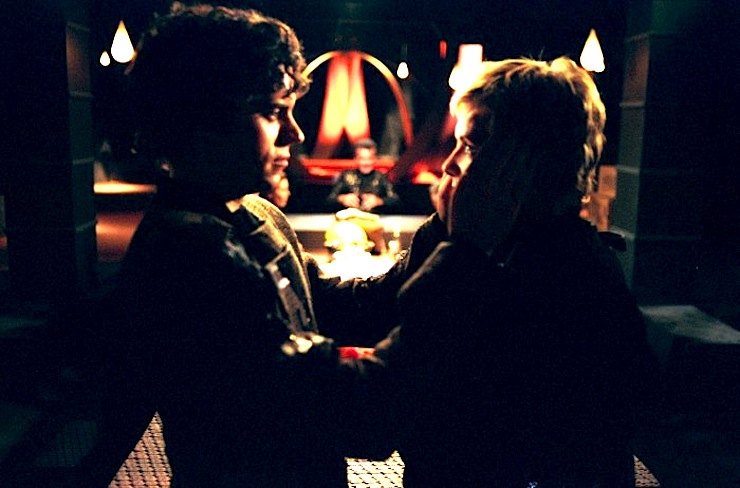
Besides which, so many things that become hugely important to Stargate as a franchise are established here: the Ancients (and the plague that devastated them), the rules of ascension, Earth’s spaceships, Tretonin, the humanform Replicators, Baal. Perhaps representative of its more important place on Sci-Fi than it had on Showtime, in this season Stargate embraces its role as a universe, as a franchise, rather than just an adventure show about four people who go through a gate.
Having said that, the season is a big comedown from the previous year’s heights. Too much time is wasted on what feels like filler—notably silly alien-of-the-week plots like “Sight Unseen,” “Forsaken,” “Memento,” even “Shadow Play,” though that works better because of the direct connection to Quinn—and just in general there are a lot of mediocre episodes here. Plus there’s a lot of retreading. “Descent” feels a little too much like something we’ve seen a thousand times before, “Disclosure” feels way too much like the first season’s “Politics,” “Sight Unseen” is way way way too much like “Bane,” and the “Redemption” two-parter feels like it’s simultaneously retreading “48 Hours” and “Into the Fire.”
The high points, though, are quite high. “Abyss” and “Allegiance” are two of SG-1’s strongest hours. For all that the latter has plot issues, the episode does a superb job of putting Jaffa peanut butter with Tok’ra chocolate and seeing what happens.
Keith R.A. DeCandido’s latest fiction release is “Down to the Waterline,” an urban fantasy set in Key West, Florida involving nixies, ghosts, scuba diving, rock and roll, mysterious murders, and the evils of spam filters. The story is free on the online magazine Buzzy Mag.It’s one of several Key West urban fantasies Keith has written, many of which can be found in the collection Ragnarok and Roll: Tales of Cassie Zukav, Weirdness Magnet.










